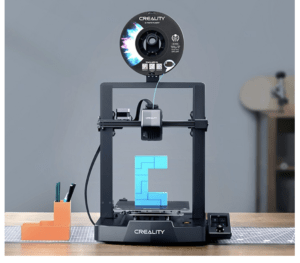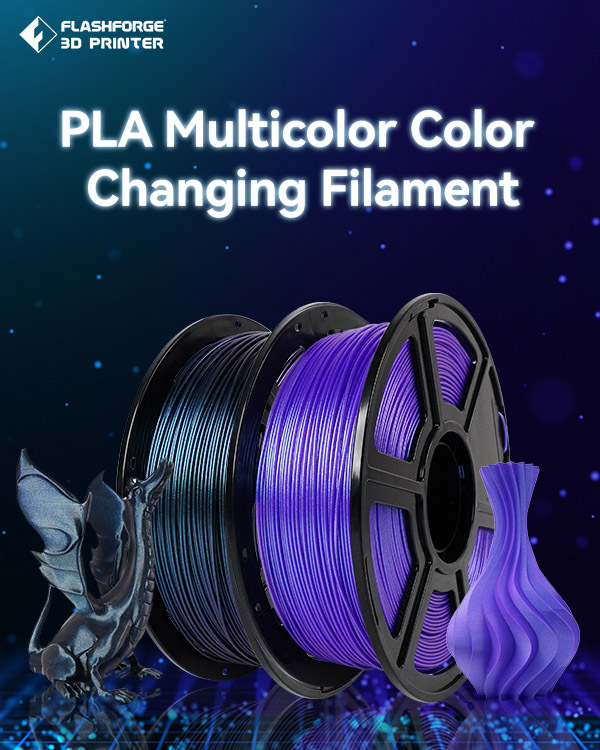3D printing with PETG (Polyethylene Terephthalate Glycol) Filament
PETG (Polyethylene Terephthalate Glycol) filament can be a rewarding experience as PETG combines the ease of printing of PLA with the strength and durability of ABS. However, there are some specific considerations to keep in mind for a successful print. Here’s a step-by-step guide to help you get started:
 Preparing Your 3D Printer
Preparing Your 3D Printer
1. Check Compatibility: Ensure your 3D printer can handle PETG, specifically that it has a heated bed and a hotend that can reach temperatures between 230-250°C.
2. Clean the Bed: Clean the printer bed using isopropyl alcohol to remove any grease or residue.
3. Bed Temperature: Set your heated bed temperature to around 70-80°C.
4. Nozzle Temperature: Set your nozzle temperature to between 230-250°C.
Preparing the Model
1. Design or Download: Create your 3D model using software like Blender, Tinkercad, or Fusion 360, or download a pre-made model from websites like Thingiverse.
2. Slicing: Use slicing software like Cura or PrusaSlicer to prepare the model for printing. Make sure to select PETG as the material. Adjust settings such as layer height, infill, and supports as needed.

Printing Parameters for PETG
1. Print Speed: Slower speeds (around 30-60 mm/s) are generally better for PETG.
2. Retraction: You might need to adjust the retraction settings to minimize stringing.
3. Cooling: Use minimal cooling fan speed. Too much cooling can make the layers not adhere well.
Actual Printing
1. Level the Bed: Make sure the bed is leveled before you start the print.
2. First Layer: Watch the first layer carefully to ensure it adheres well to the bed. If it doesn’t, you may need to stop the print and adjust the bed level or nozzle height.
3. Monitor: While not strictly necessary, it’s often a good idea to periodically check on the print to ensure everything is going smoothly.
Post-Processing
1. Removal: Once the print is complete and the bed has cooled down, remove the model carefully using a spatula or similar tool.
2. Cleaning: Remove any supports and sand the print if necessary.
3. Inspection: Check for errors or issues such as stringing, layer separation, or warping.
And that’s it! You’ve successfully 3D printed a model using PETG filament.
Here are the sections for a more in-depth look:
1. Preparing Your 3D Printer: Details on bed leveling, nozzle cleaning, and other preparation steps.
2. Preparing the Model: Tips on designing a model that’s optimal for PETG and slicing settings.
3. Printing Parameters for PETG: More information on optimal print speed, retraction, cooling, and other parameters.
4. Actual Printing: Troubleshooting common issues during the printing process and tips for monitoring the print.
5. Post-processing: Techniques for improving the appearance and performance of your printed object.

The printing parameters for PETG can be a bit different from other commonly used filaments like PLA or ABS. Here’s a more detailed look at some of the important settings:
Print Speed
– General Speed: PETG prints best at a moderate speed, around 30-60 mm/s. Slower speeds are generally better for complex parts or for high-detail prints.
– First Layer Speed: Slowing down the first layer to around 20-30 mm/s can improve bed adhesion and set the stage for a successful print.
Retraction Settings
– Retraction Distance: Retraction helps to prevent stringing. For PETG, a retraction distance of 4-6 mm is often recommended.
– Retraction Speed: A moderate retraction speed of around 40-50 mm/s usually works well.
Cooling
– Fan Speed: PETG generally doesn’t need much cooling. Too much cooling can cause layer adhesion issues. Aim for around 20-50% fan speed after the first few layers.
– Bridging: When printing bridges, some cooling may be beneficial. Your slicer may have a specific setting for this.
Layer Height and Infill
– Layer Height: A layer height of around 0.1-0.3 mm is typical, though this can vary depending on your printer and the level of detail you desire.
– Infill: The amount of infill you choose will depend on how strong and solid you need the part to be. A typical infill density for PETG is around 15-30%.
Supports and Bed Adhesion
– Supports: If your model has overhangs greater than 45 degrees, you’ll likely need supports. PETG can be more challenging to remove from supports, so you may want to increase the distance between the support and the part in your slicer settings.
– **Bed Adhesion**: A brim or raft can help with bed adhesion. Some people also use glue sticks or hairspray on the print bed for additional adhesion.
Flow Rate and Extrusion Multiplier
– Flow Rate: Adjusting the flow rate can help you dial in the perfect print. Start with 100% and adjust up or down in 5% increments based on your results.
– Extrusion Multiplier: This is another way to adjust how much filament is being extruded. A value of around 0.9 to 1.1 is usually a good starting point for PETG.
Each 3D printer and filament brand may have its own quirks, so you’ll likely need to perform some test prints and possibly tweak these settings to get everything just right for your specific setup.

Would you like to know more about any of these specific parameters? contact@3dprintingbykevin.com
Bullwinkle